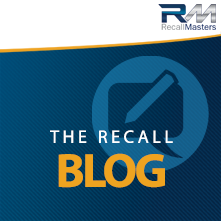Is this a Step in the Right Direction?
Is this a Step in the Right Direction?
A Blog Post by Sean Reyes, Chief Marketing Officer for Recall Masters
It is always encouraging to see our government taking steps to ensure the safety of drivers on our roads. And I am fully aware of the hurdles and challenges they face from dealerships to OEMs to consumers. As well as the challenges dealers, consumers and OEMs face when it comes to recall compliance.
In Stout’s Annual Automotive Defect & Recall Report published on November 2 of this year, the Acting Administrator of the NHTSA laid out a plan which may help future recall rates. It includes the following:
- Engineering – The increase in vehicle technology could lead to further vulnerability when it comes to vehicle safety. The advancement of technology and features (self-driving vehicles, etc.) could be compromised. Given the current lack of trained technicians for these and future technologies, this might present challenges for dealerships to repair. The result could be a rise in the number of unsafe vehicles because dealers will be waiting on parts, overwhelmed when it comes to shop capacity and many will be unable to make the repairs. The plan calls for manufacturers to design and make vehicles that can be repaired as technology expands.
- Education – Dealerships may inevitably be forced to look for computer engineers and train them on these new technologies in addition to standard vehicle service repair to keep up with repair demand. There have been several instances where Tesla and other EVs had issues with self-driving technology and electric battery issues that caused them to catch fire during the charging process.
- Enforcement – This, of course, is more difficult because the government can’t enforce consumer compliance. They can enforce restrictions and instructions for manufacturers but, dealerships don’t have the “power” to enforce anything. State governments could demand the integration of safety recall repairs and annual vehicle safety inspections as a requirement for consumer registration renewal. That might be a way to reduce the number of unsafe vehicles on the road.
This could prove interesting, especially as other challenges including the lack of technicians, parts availability and the inability for NHTSA to keep up with investigations shape recalls and consumer safety. I hope the NHTSA continues to work towards increasing compliance while working with governments on both the Federal and State level to identify and implement WORKABLE solutions for all parties concerned. We all want recall rates to go down and the roads to be safer for drivers of both gas-powered and EV vehicles.
About the Author


